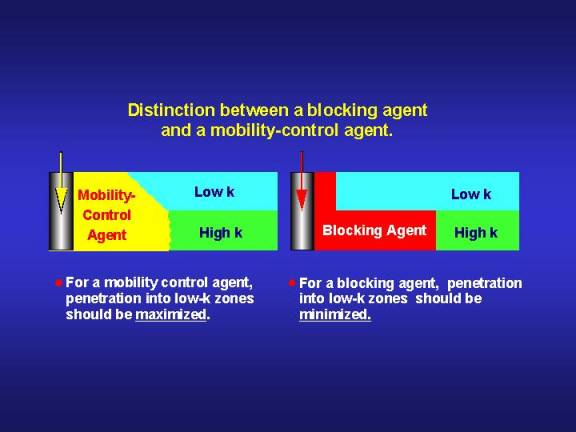Are gel treatments fundamentally different from polymer floods?
Yes.
The distinction between a blocking agent (e.g., a gel) and a mobility-control agent (e.g., a polymer solution) is an important concept to understand (see Fig. 11). A mobility-control agent should penetrate as much as possible into the less-permeable zones so that oil can be displaced from poorly swept zones. In contrast, we wish to minimize penetration of blocking agents into the less-permeable, oil-productive zones. Any blocking agent that enters the less-permeable zones can hinder subsequent injected fluids (e.g., water, CO2, steam) from entering and displacing oil from those zones.13
Important distinctions also exist between polymer that are used in mobility-control applications and gelants and gels are used in blocking applications. Published laboratory results consistentlyshow three characteristics of gelants and gels in porous rock.8,9,17,29-31 First, early in the gelation process, gelants flow freely through porous media, like uncross linked polymer solutions. Second, after gel aggregates grow to approach the size of pore throats, they become trapped and no longer flow at any significant rate. Third, the transition between these two conditions occurs over a relatively short time period. These facts further emphasize that gel treatments are not polymer floods. Gels, crosslinked polymers, gel aggregates, and the so-called "colloidal dispersion gels" (1) are not simply viscous polymer solutions, (2) do not propagate through porous rock like polymer solutions, and (3) do not enter and plug the most-permeable zones first and plug progressively less-permeable zones later.13 Thus, one cannot simply add a small amount of crosslinker to a polymer solution and expect it to act like a super polymer flood. One should be concerned if a vendor uses traditional polymer-flooding arguments or simulations to argue the benefits of a gel treatment.
